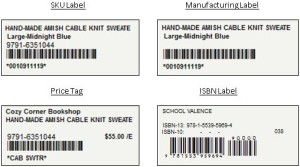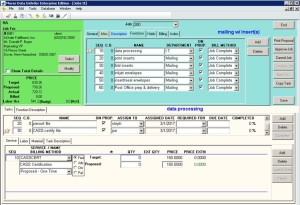Customer Service Options for eCommerce
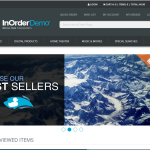 You know that exceptional Customer Service is critical. It can determine whether you get sales, good references, and future customers. You can use a variety of services to attract and keep your eCommerce customers, each with its own benefits. Here is a list of options and how they can be useful.
You know that exceptional Customer Service is critical. It can determine whether you get sales, good references, and future customers. You can use a variety of services to attract and keep your eCommerce customers, each with its own benefits. Here is a list of options and how they can be useful.
- Email – Some people prefer to use Email, so be sure you can be reached this way as well as all of the others. Just as it’s important for customers to contact you, it’s also important for you to contact your customers. You can use Email to acknowledge orders, notify customers about shipments, approve returns, reset passwords, send digital products, promotions, and other targeted marketing efforts. Make sure to keep your mailing lists current, and allow shoppers to choose which messages they receive to increase their effectiveness. Use your ERP system to log messages that are sent, providing customer service reps more opportunity to enhance the service experience when customers call.
- FAQs/Q&A – As people get more comfortable shopping with their devices, they need less personal contact less and less. This makes it more important for you to anticipate all the information they will need, such as answers to the most common questions you receive. Providing this information with each item or service gives your customers the information they need make purchase decisions.
- Phone – Too often, online businesses use Email as the only means of contact, or a phone number is not easy to find. If shoppers have a question about your business or products, or a problem navigating your site, make sure you can help without making them wait. Customer Service should always be at your customers’ fingertips. Make sure your customers can reach you immediately with any questions. Display your phone number where it can be easily and quickly seen. If shoppers have questions or problems navigating your site, make sure you can help without making them wait.
- Social Media – Word of mouth can be the best form of reference. It can also be the worst. Whether someone is asking neighbors if they know a good plumber or roofer or telling neighbors about their plumber or roofer, personal experiences spread fast with social media. If your customers are on social media (or if you want to attract customers who are on social media), your business must be there too.
- Community / Customer Participation – Reviews can increase sales by steering and bolstering confidence as shoppers are considering their purchases. If your ERP system provides the capability, you can enable live crowd sourcing so your customers can provide feedback for products. You can even create your own form of social media, providing online forums or Q&A sections that allow customers to contribute.
Clear communication and availability is critical in providing exceptional customer service to your eCommerce customers. Sometimes, something may happen to make a customer unhappy. Build your reputation as the business that responds appropriately and professionally.
Life After ERP Implementation
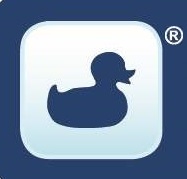 Are you using your ERP System to its fullest advantage? Your company purchased the software, training and setup work was completed, and then it was turned on. A few years have gone by, and several updates have been made to the software. Some of the employees and even a few managers have come and gone. Few people in your department remember anything from the training, but you know the basics to get your day to day work done.
Are you using your ERP System to its fullest advantage? Your company purchased the software, training and setup work was completed, and then it was turned on. A few years have gone by, and several updates have been made to the software. Some of the employees and even a few managers have come and gone. Few people in your department remember anything from the training, but you know the basics to get your day to day work done.
Once your new system is live – and you’ve used it for a while – you may have a whole new set of needs and workflows. Equally as important as having the best technology is knowing what it can do for your business, and using it to continuously improve. Your business is constantly evolving and improving. It’s beneficial for long-time software users to evaluate how they’re using their software to determine whether improvements can be made in their processes. Here are some things to consider as you evaluate your system.
- Is your staff doing manual tasks that can be automated?
- Are you getting the most out of your web cart?
- How fast can customers find your products?
- Have your employees reverted to old processes?
This leads to frustration – and the feeling you’re stuck with something that isn’t working for you. So often, we hear “Why didn’t anyone tell us the system could do this?”
Align efficiencies with your organization’s goals
Getting the most from your ERP system means exploring, testing, and implementing new procedures and functions that maximize throughput, maximize the use of your resources, and maximize growth.
To accomplish this, you must fully understand how the system works today in your organization, as well as other ways it can potentially be configured to be used more effectively. This becomes especially important when new versions of the system become available because they include new capabilities or improvements to existing functionality.
It can be overwhelming to figure out a change strategy. Completing Annual Implementation Audits of your system and procedures can refresh the relationship between your system and your procedures. It can identify what you need, what you want, resolve annoyances, and answer questions about new features that can solve problems. Implementation Audits commonly reveal shortcuts that were not being used, and often find processes being done manually when your software could be doing them for you. You can identify functions, features, or optional modules that are not being used at all because nobody knew they existed. At this time, users and managers can attend refresher training sessions, keeping the knowledge and support of your ERP system in the hands of qualified users.
When was your last Annual Implementation Audit? When it’s time to re-align your ERP system with your processes, give us a call. Morse Data is committed to Change Management and Continuous Process Improvement. Changes can get out of line, but we can help get your ducks InOrder.
5 Ways InOrder ERP is Perfect for Managing your Inventory
Your products, your services, your location, your tools, and of course, your employees. All of these help your business succeed. If they’re not working together efficiently, it will impact your customer satisfaction and your bottom line. Here are five ways your ERP system can help.
Inventory Item Dimensions
If your company sells multiple variations of single items (style, color, size, etc.), then InOrder is for you. InOrder’s inventory management system allows you to define up to eight variations (dimensions) for a product, with unlimited values for each dimension.
When placing an order for an item with dimensions, simply enter the item number, and InOrder shows all available options in an easy to use grid.
Alternatively, you can specify the dimensional SKU or UPC code.
Reserving Inventory
What happens when a wholesale customer unexpectedly orders the last of your inventory for a particular product? How long do your retail customers have to wait for the backorder? And how many customers will you lose because they don’t want to wait?
With a good ERP system, you can prevent this from causing you to lose revenue from non-wholesale orders. Simply reserve a specific quantity of each item for your retail customers. When an order is placed by a wholesale customer, that reserved quantity isn’t even available.
Inventory Labels
Inventory barcodes are a necessity. Placing labels with barcodes on your products helps quickly identify them and can help prevent mistakes during picking, Point of Sale (POS), and physical inventory.
The InOrder Kit Definitions feature allows you to assemble multiple items for sale as a single item. With this functionality, you can track the inventory, component assembly and disassembly, sales, and costs of the assembled kit and its component items.
When an out-of-stock inventory item is ordered, you can substitute either a single in-stock inventory item for another brand of the same item, or you can substitute a group of inventory items (Kit-on-the-Fly). This feature works best when you have many items that are typically ordered together, but you need the ability to ship what is in stock.
RF Communication
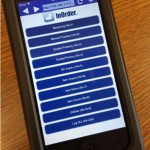 Use an RF communication system from top quality ERP software to efficiently handle inventory through real-time inventory tasks, improving productivity and control for major warehouse functions. After rolling out an RF system, a warehouse can significantly decrease paper processing and increase its inventory receipt processing from an average of 20 line items per hour to 55 line items per hour, per person. InOrder RF also supports inventory dimensions.
Use an RF communication system from top quality ERP software to efficiently handle inventory through real-time inventory tasks, improving productivity and control for major warehouse functions. After rolling out an RF system, a warehouse can significantly decrease paper processing and increase its inventory receipt processing from an average of 20 line items per hour to 55 line items per hour, per person. InOrder RF also supports inventory dimensions.
For more information about Inventory Management with InOrder, contact sales@morsedata.com.
6 PCI DSS Best Practices to Become Requirements in 2018
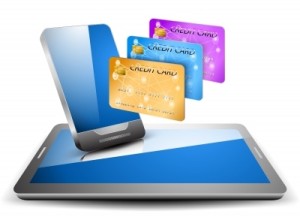 Version 3.2 of the PCI DSS requirements was published in 2016, but several items are considered best practices until January 31, 2018. On February 1, 2018, they become requirements. One is for everyone meeting PCI DSS requirements, while the rest are for service providers.
Version 3.2 of the PCI DSS requirements was published in 2016, but several items are considered best practices until January 31, 2018. On February 1, 2018, they become requirements. One is for everyone meeting PCI DSS requirements, while the rest are for service providers.
Following are the best practices that become requirements on February 1, 2018.
Requirement 6.4.6 is for everyone meeting PCI DSS requirements. Whenever you implement a significant change to your system/network, verify that all appropriate PCI DSS controls are applied where needed, and update your documentation to reflect the change.
Requirements for Service Providers
- Document your cryptographic architecture (Requirement 3.5.1).
- Have a process to detect and report failures of critical security control systems. See PCI DSS Requirements 10.8 and 10.8.1 for examples of failures and what processes must include to respond to security control failures in a timely manner.
- If segmentation is used to isolate the CDE from other networks, perform penetration testing on segmentation controls/methods at least every six months and after any changes to them (Requirement 11.3.4.1).
- Executive Management must assign responsibilities and define a charter to maintain PCI DSS compliance. PCI DSS Requirement 12.4.1 provides details about what the compliance program must include, and who is considered “executive management.”
- Perform reviews at least quarterly to confirm personnel are following security policies and operational procedures, and document the results of those reviews (Requirements 12.11, 12.11.1).
Please refer to PCI DSS for your responsibilities under these requirements. If you have specific questions relating to your responsibilities for PCI DSS compliance, please direct them to your Qualified Security Assessor (QSA).
Helpful Articles for Your Business
- You can’t hide from Cyber Threats, but this article can help you organize a strategy to defend your business against it.
- B2B companies – Don’t miss out on opportunities to grow your business! Use your eCommerce store to attract new customers in surprising ways.
- This interesting article discusses billion dollar digital marketplaces.
- It’s no secret that content increases search results and traffic to your website, but how does that happen? This article offers helpful tips.
InOrder ERP Kits and Substitutions Can Benefit Your Business
If your company buys lots of parts, and then puts them together before shipping them to customers, InOrder’s Kit Definitions feature will benefit your business. If your company doesn’t always keep enough quantity on hand for your common components, or does not know how many parts to keep in stock, then the InOrder Substitutions feature is for you.
Kit Definitions
The InOrder Kit Definitions feature allows you to assemble multiple items for sale as a single item. With this functionality, you can track the inventory, component assembly and disassembly, sales, and costs of the assembled kit and its component items.
Using InOrder for Kits is great for items you always sell together. It allows you to stock and sell multiple part numbers together under one Top Number. A good example of this would be a Lowering Block Kit, which has u-bolts, blocks, and hardware. 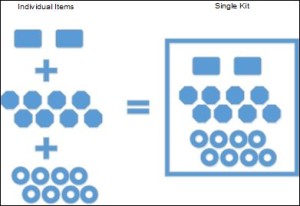
The InOrder Kit Definitions feature provides the ability to:
- Control the inventory and cost for each item individually.
- Base the total cost for the kit on all the items included.
- Discount the retail price (buy in a kit and save).
- Replenish kits based on individual SKUs in stock.
- Disassemble kits when you no longer need them, or to free up common components needed elsewhere.
- Provide easy Kit Definition access to your Customer Service Reps and online, enabling assistance with replacement parts orders.
InOrder Reports for Kit Definitions include the Kit Management Report, which lists kits, their components, and the information about them. Because assembled kits and components are inventory items, they appear on inventory reports and sales reports as any other inventory item. In addition, the InOrder Replenish Report instructs you on how many kits to build based on total number of kits sold and how many of each individual item is in stock. (For example, you can run the report on how many kits were sold in the last 30 days.) Kits are either in stock or out of stock. If one item in the kit is out of stock, the entire kit will be out of stock.
Substitutions
When an out-of-stock inventory item is ordered, you can substitute either a single in-stock inventory item for another brand of the same item, or you can substitute a group of inventory items (Kit-on-the-Fly). This feature works best when you have many items that are typically ordered together, but you need the ability to ship what is in stock. (All items do not have to be in stock at one time to ship, as with Kit Definitions.)
A good example of a Substitution would be an order for the following:
- Interior kit
- Seat Upholstery
- Door Panels
- Headliner
- Carpet Kit
- Rear Seat Shelf
In a Substitution, if the Carpet Kit is out of stock, you can still process the order and ship the remaining in-stock items. The carpet will ship as a backorder (when it is back in stock) and retain the substitution price. InOrder will exchange the price for each item, so it will equal the Substitution Price (buy all the items together and save). In addition, it will break all the items out on an invoice, and you can remove items that may not be needed; the price will adjust.
Unlike Kit Definition, Substitutions do not show in stock or out of stock. Once invoiced, the items are displayed on the invoice with the exchanged price and will either be in stock or backordered (the Top Number will not have inventory).
You can use this feature for Build-to-Order Kits-on-the-Fly as your customers request them, or for Buy-X-Get-Y free offers.
This great feature is very flexible, allowing you to offer up a discounted price for bundled items, and still ship items regardless of inventory status of the items included.
Contact us for more information about how the InOrder Kits and Substitutions features can benefit your business.
Tools for your eCommerce Shoppers
 There are many ways you can help shoppers navigate your eCommerce store. But not all of these features provide the same benefits for all shoppers – or for you. Let’s explore 4 tools that are easy to provide and your customers will appreciate.
There are many ways you can help shoppers navigate your eCommerce store. But not all of these features provide the same benefits for all shoppers – or for you. Let’s explore 4 tools that are easy to provide and your customers will appreciate.
Search Filters
If shoppers search for something specific, it means they know what they want, and they want to find it immediately. Check your search analytic results to see how shoppers are searching for your products. Remember that a search engine-optimized design gives you additional edge over the competition.
If you have multiple product categories, make sure your customers can easily find what they’re looking for. Provide them with the ability to combine different search criteria, in whatever combinations they choose.
Reviews
Reviews can increase sales by steering and bolstering confidence as shoppers are considering their purchases. Google recognizes the benefits of ratings and reviews, and you can encourage Google to show them with schema markup. Additionally, it is important to know what your customers think of your products because then you know how you can improve your offerings, and where you should consider raising or lowering prices. If your ERP system provides the capability, you can enable live crowd sourcing so your customers can provide feedback for products. You can even provide online forums or Q&A sections. After each purchase, ask for a review of both the shopping experience and the product. This lets the customer know that you still care even after the sale. And when your customers take the time to send their valuable opinions, make sure to review and display them as soon as possible.
Chat-bots
A chat-bot is a messaging system between you and your shoppers. An artificial customer service agent represents your side of the conversation, providing assistance that is always available.
Chat-bots can help your business by sending automatic texts and Emails to customers, informing them of specials, sending coupons and reminders to finish the checkout process to reduce cart abandonment.
Chat-bots can be helpful when they’re needed, as long as they’re not intrusive and don’t get in the way of browsing a website.
Videos
Videos are can be very useful shopping tools. Customers can use videos to learn the purpose of a product, how to use it, and why they would want it. Videos can provide information that might be missing from an item’s description, answer questions that might not otherwise be asked, and they often help shoppers decide to buy an item.
Videos also help shoppers decide not to buy an item, which is a benefit to you if customers don’t buy something they won’t be happy with or will be disappointed in, or will return.
From simple search filters to virtual reality, many shoppers want your assistance, and if you don’t provide what they expect, they’ll find another eCommerce site that will.
Can Free WiFi Benefit Your Business?
 Free WiFi is common in many retail stores, and, in many cases, it provides benefits to both the business and its customers. Everybody likes “free” and WiFi is no different. For example, customers may linger longer, buy more, and return to a store with free WiFi. Could this make as big a difference as targeted marketing? If you’re exploring this service, here are some ways it could benefit both you and your customers.
Free WiFi is common in many retail stores, and, in many cases, it provides benefits to both the business and its customers. Everybody likes “free” and WiFi is no different. For example, customers may linger longer, buy more, and return to a store with free WiFi. Could this make as big a difference as targeted marketing? If you’re exploring this service, here are some ways it could benefit both you and your customers.
Competitive – As mentioned, free WiFi is common, and in some cases, customers expect it. So don’t lose shoppers to the store down the street because they have free WiFi and you don’t.
Opportunities – You know it’s critical to interact with customers, and free WiFi can earn its keep when it comes to this. Customers begin at your site, where you have a chance to relay your message and thank them with a promotion that’s valid during that visit.
Engagement – With free WiFi, customers may stay longer, browse more, enjoy their stay and possibly buy more. When shopping is pleasant, you expect customers to come again. Shoppers may post their locations on social media, where they might even encourage their friends and families to shop – Bonus!
Customer Service / Loyalty – Use your free WiFi to embrace your comparison shoppers. Motivate them to research your products on your website, making it easy to buy from you. Keep shoppers involved and build confidence and trust by providing a community environment and participating with them.
Analytics – You know how important it is to make relevant offers. Studies also show that customers get annoyed with too many irrelevant messages, so use your WiFi service to observe customer preferences and provide them with offers they’ll appreciate.
There are both pros and cons to offering free WiFi. Speed is one concern, and security is another. You want control over how it is used so it isn’t abused. And while it’s nice to have customers sit in your coffee shop or restaurant and surf (or work) all day using your free WiFi, that practice could seriously inhibit table turnaround. While free WiFi has its benefits, it might not be the smart choice for every business.
What are your thoughts on offering free WiFi?
Manage Sophisticated Multi-Tiered Projects and Jobs with the InOrder ERP System
Keeping tracking of costs is crucial for keeping your business afloat. Without it, you wouldn’t know what to charge your customers for your products or services. Materials, labor, even your fuel bill – these are all important considerations in pricing your products and providing estimates for services. It makes sense that your ERP system has a strong Job Cost functionality to accurately account for everything and increase your efficiency. InOrder fills those requirements, and more. Here are just a few highlights:
- Invoice billable jobs.
- Both one-time jobs and perpetual jobs are supported, including periodically billed jobs for service contracts or other on-going billable jobs.
- Create jobs from job classes, from standard jobs you have created ahead of time, or by simply copying similar jobs.
- Define unlimited job specifications by Job Class.
- Jobs may consist of one or more functions and each function consists of one or more tasks. Within each task, InOrder tracks billable services performed, labor, and materials needed/used.
- Accrue Job Services from timesheets, warehouse data capture, manual entry, or by counting various qualifying transactions performed throughout InOrder.
- Capture labor through timesheet entry, or by time capture using a barcode scanning or other data capture interfaces. Labor is categorized by job and by kind of work.
- “Reserve and order materials” function allows inventory to be reserved and allows additional inventory to be ordered and received using inventory hold access codes linked to each job, for enabling optimal inventory planning.
- Inventory depletion occurs as material usage data is entered. Kit assembly jobs are also supported. In this case, kit assembly transactions are generated directly from the Job Cost module where services provided can accrue in tandem with inventory adjustments.
For more information about managing jobs with InOrder ERP, contact Morse Data Corporation.







